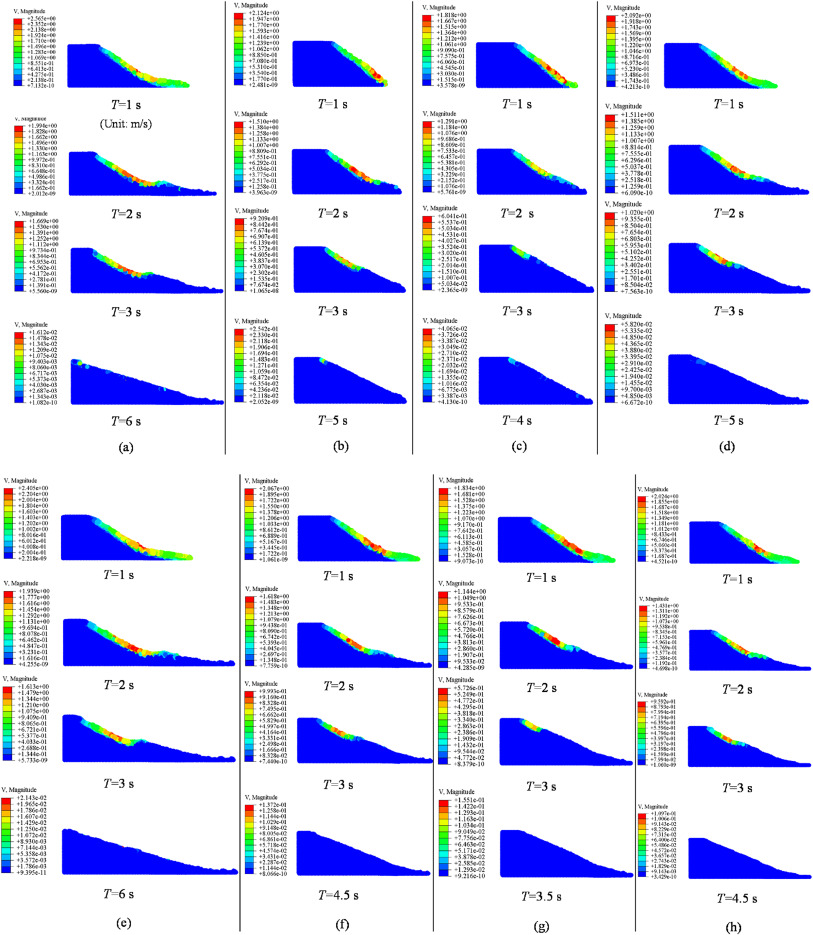JRMGE / Vol 14 / Issue 1
Numerical analysis of slope collapse using SPH and the SIMSAND critical state model
Zhao Lu, Zhuang Jin, Panagiotis Kotronis
Show More
a Civil and Environmental Engineering, University of Macau, Macau, China
b Research and Development Center, Shenzhen Foundation Engineering Co. Ltd., Shenzhen, 518000, China
c Department of Civil and Environmental Engineering, The Hong Kong Polytechnic University, Hong Kong, China
d Southern Marine Science and Engineering Guangdong Laboratory (Guangzhou), Guangzhou, 510000, China
e Department of Ocean Science and Engineering, Southern University of Science and Technology, Shenzhen, 518000, China
f Institut de Recherche en Génie Civil et Mécanique (GeM), École Centrale de Nantes, Université de Nantes, Rue de la Noë, Nantes, 44321, France
2022, 14(1): 169-179. doi:10.1016/j.jrmge.2021.03.009
Received: 2020-12-21 / Revised: 2021-02-20 / Accepted: 2021-03-31 / Available online: 2021-05-01
2022, 14(1): 169-179.
doi:10.1016/j.jrmge.2021.03.009
Received: 2020-12-21
Revised: 2021-02-20
Accepted: 2021-03-31
Available online: 2021-05-01
Geological disasters such as slope failure and landslides can cause loss of life and property. Therefore, reproducing their evolution process is of great importance for risk assessment and mitigation. The recently developed SIMSAND critical state sand model combined with the smoothed particle hydrodynamics (SPH) method is adopted in this work to study slope failure under large deformations. To illustrate the efficiency and accuracy of the SIMSAND-SPH approach, a series of slope collapse studies using the discrete element method (DEM) considering various particle shapes (i.e. spherical, tetrahedral and elongated) is adopted as benchmarks. The parameters of the SIMSAND model are calibrated using DEM triaxial tests. In comparison to the DEM simulations, the runout distance and final slope height are well characterized with the SIMSAND-SPH approach with less computational cost. All comparisons show that the SIMSAND-SPH approach is highly efficient and accurate, which can be an alternative numerical tool to simulate real scale granular flow.
Keywords: Granular material, Smoothed particle hydrodynamics (SPH), Large deformations, Landslide, Critical state, Slope failure, Sand
Article Data
Author(s) Information
Zhuang Jin

Dr. Zhuang Jin received his PhD degree at Ecole Centrale de Nantes, France in 2019 and then works as a post-doctor at the Department of Ocean Science and Engineering of Southern University of Science and Technology, China. His research interests involve large deformation issues in geotechnical engineering and soil-structure interaction (SSI) for mooring foundations in ocean engineering. Up to now, he has published nearly 10 technical papers.

